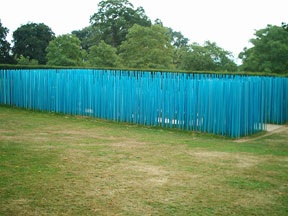Push, pull; old, new

Renewal and positive change keep things exciting. Buffalo's Albright-Knox Art Museum recognizes that importance this month as it sells some older, seldom-exhibited works in order to strengthen acquisition funds. It's been quite a local cause celebre (one that I won't rehash here), but it’s made me think about changes and additions to gardens large and small. A picture I took on a recent walk to the museum reminds me of how familiar landscapes react to change. I suppose some would see the sculpture in the picture (added a couple years ago) as detracting from the museum, but I was so struck by it, I took several pictures—and normally I'd never consider photographing the museum. It's too familiar.
When in England a few years back, we toured Hestercombe, designed by Lutyens in the eighteenth century and planted by Jekyll in the early twentieth. There was a lake surrounded by woodland walks and several beautifully-restored follies. But in addition to restoring the follies, the trust had brought in some new elements. Various sculptures created by contemporary artists appeared throughout the grounds, drawing the eye and providing focal points. Our party was divided on their efficacy, but I thought it was interesting that the restoration effort did not confine itself to keeping the garden frozen in time, but rather attempted to continue its development with twenty-first century additions. I don’t know if they were meant to be temporary installations; I suspect so. In any case, I admire the concept and hope to always be adding and subtracting from my garden, keeping it fresh and interesting. There will definitely be some deaccessioning this spring! And some acquisitions.
Restored folly:

Contemporary addition:


Comments
I think he was a bit appalled when I took to the idea.
These are vast estates. They can get away with more. It would be folly to try to duplicate such a thing.
Cars are huge--you're joking, but I've seen them in a lot of the gardening shows.